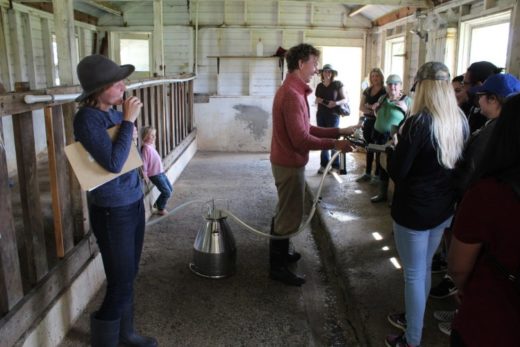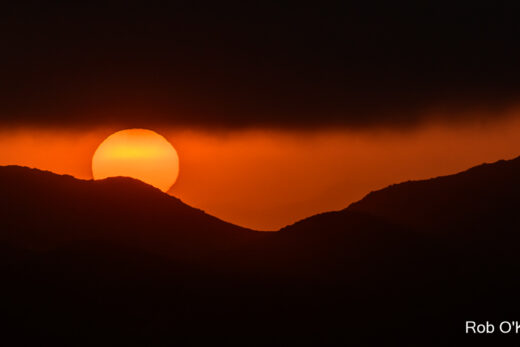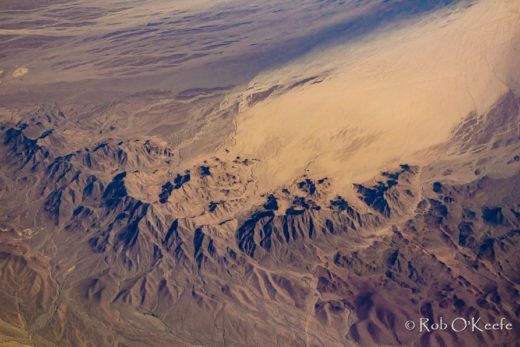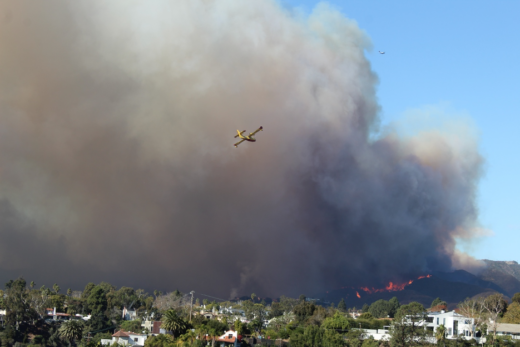Part II: Roundabout Trip to the Beach
Streams and rivers tumbled and abraded the liberated ancient rocks as our sand grain (or quartz crystal) was carried all the way to an ancient coastal basin and shoreline, where it was deposited along with other sediment. Billions of such grains mixed with pebbles and silt as more layers were deposited on top of them.
Various sediment sizes (clasts) that eventually form into clastic sedimentary rocks include larger boulders and cobbles (conglomerate), our course sand (sandstone), smaller silt (siltstone), and tiny clay and mud particles (claystone, mudstone, and shale). Our sand was deposited during a time of intermediate stream energy that alternated between the cobbles and boulders deposited by very high-velocity streams, and the calmer, quieter waters that deposit silt and clay in their lower-energy environments.

Pressure squished the grains and packed them closer while groundwater carried chemicals (such as silica and calcite (or calcium carbonate)) that precipitated out of the water and glued the particles together. This lithification over thousands of years formed hard sandstone. Our sand grain was buried again, this time within this layer of sandstone. Besides the pressure and some gradual deformation and cracking into joints and fractures caused by occasional extensional and compressional forces, it was settled in another quiet, dark, unchanging environment for millions more years, but farther west from its granitic batholith “origins”.
About 10 million years ago, tectonic activity was building mountains along parts of California’s ancient coastlines, lifting landmasses above the sea and pushing the shorelines and the ocean farther west. As the Coast Ranges emerged and the San Andreas Fault Zone elongated, our quartz crystal, imbedded within its surrounding sandstone, was again lifted above sea level. Overlying rock formations were eventually exposed, weathered, and eroded away until our crystal and its sandstone finally emerged at the surface and into the light again, only a few centuries ago.

Familiar external processes quickly took control. Physical and chemical weathering broke the sandstone apart and into pieces.
E4: Go to E4 to learn more about mechanical (or physical) weathering processes.
E5: Go to E5 to learn more about chemical weathering processes and the nonclastic rocks they may produce.
Mass wasting in the form of small landslides transported our weakened rock downslope. Eventually, a pebble fell out of the exposed sandstone with our sand grain imbedded in it. It landed in a small rill that filled with running water during a rainstorm and it was slowly rolled and tumbled downhill. Our pebble was transported toward a larger gully that merged with an even larger stream course.

You may have noticed these pebbles and sand grains bouncing along streambed bottoms while performing their fair share of abrading along the way. Observe how surrounding cobbles are repeatedly rolled and tumbled in the turbulent water as many of the nooks and crannies are smoothed until the rounded rock spheres resemble polished, speckled eggs of various sizes. You may have even walked on rounded rocks and sand grains that were carried and then deposited along stream and river banks during previous high discharge events, after winter’s storms. Throughout many years, our rock-turned-pebble-turned –sand grain travelled a little father downhill and accelerated into larger stream channels and their canyons, encountering less friction until it made it to the ocean.

You can now see how this sand grain story is so powerfully connected to our previous web page story, as we followed a California water drop. You might also notice how erosional and depositional environments can change drastically over time and along the way as stream velocities accelerate on steeper slopes and decelerate through flatter terrain with lower relief. Human obstructions, such as dams, can also create barriers that block our sand and other sediments from getting to their base levels (in this case, sea level). Such upstream structures may result in accelerated erosion within sediment-poor stream channels and on beaches downstream from the obstructions that have trapped debris. Changes in plant cover, especially in and around riparian plant communities, can also drastically alter sediment loads of streams. The best example of this is when a wildfire strips away protective biomass, leaving a surface far more vulnerable to rain drop impacts and debris flows that violently carry loose materials downslope. California streams and rivers produce some of the greatest sediment yields /area in the world during winter storms that can follow on the heels of these fire seasons, when accelerated erosion rules.









